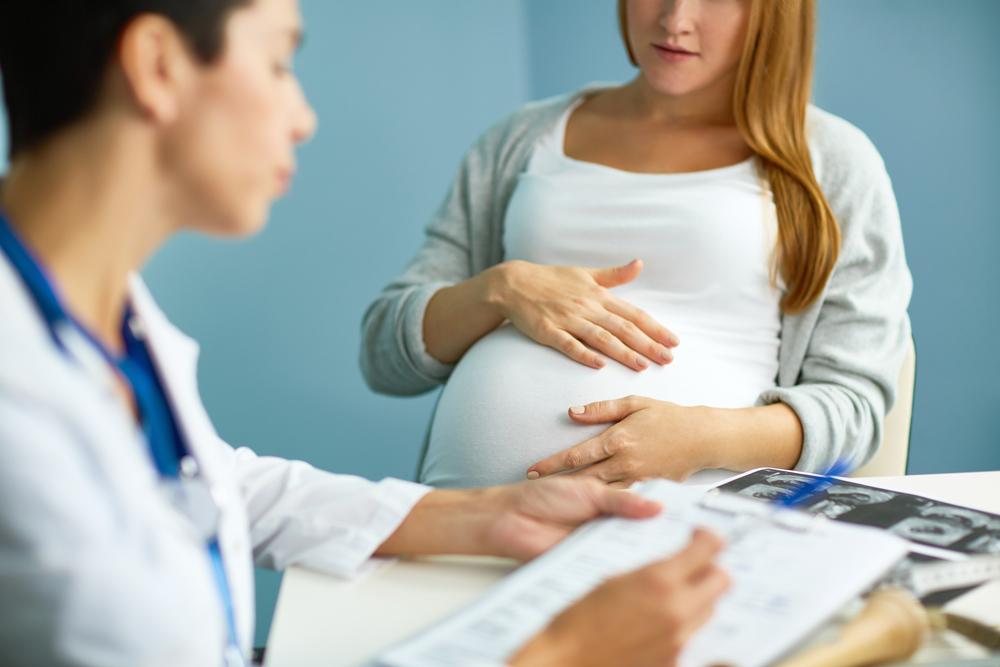Pregnancy Could Be Linked to Onset of Cushing’s Symptoms, Retrospective Study Suggests

More than 25 percent of women with Cushing’s disease experienced their first symptoms within one year of giving birth, a small study by the Pacific Neuroscience Institute found.
The findings suggest a possible causal relationship between the biological stress of pregnancy and Cushing’s disease (CD), with more than a two-fold risk of women developing the disease within one year of pregnancy.
The study, “Pregnancy-associated Cushing’s disease? An exploratory retrospective study,” was published in the journal Pituitary.
Eighty percent of Cushing’s disease cases are women, and most are of reproductive age.
Levels of the body’s main stress hormone, cortisol, normally increase during pregnancy. In the last weeks before birth, cortisol levels are two to three times higher than normal, similar to Cushing’s disease.
Because cortisol levels gradually increase during pregnancy, a diagnosis of Cushing’s disease within the gestation period is problematic.
Circumstantial “evidence suggests a higher incidence of CD immediately following pregnancy, in the peripartum period [a few weeks after childbirth],” the study’s authors wrote.
To shed additional light on the matter, researchers retrospectively investigated the frequency of Cushing’s disease onset related to pregnancy.
A total of 64 women with biochemically-diagnosed Cushing’s disease and treated at Providence Saint John’s Health Center in Santa Monica, California, from July 2007 to December 2017 were included in this study.
For the analysis, patients were divided into three groups:
- Women with pregnancy-associated CD: “defined as symptom-onset within 1 year of pregnancy that was explicitly linked to the pregnancy by the patient’s own recollection of her pregnancy and subsequent symptoms related to CD”;
- Women of reproductive age: “defined as age 15–45 years, in whom CD onset was not associated temporally with pregnancy within the past year”;
- Women not of reproductive age at the time of CD onset.
Results showed that 64 percent of the patients were of childbearing age at the time of diagnosis. Of these, 27 percent (11 women) had pregnancy-associated Cushing’s disease. This might be due to small, slow-growing or dormant corticotroph pituitary adenomas that were stimulated by pregnancy-related hormonal changes; however, this hypothesis was not confirmed by the researchers.
On average, patients in group 1 had two pregnancies prior to Cushing’s disease onset, compared to zero for 30 other women with disease onset during reproductive age. This suggests that undergoing the biological stress of pregnancy more than once could play a role in Cushing’s development.
“Another possible explanation of the association between CD and pregnancy is simply that patients are more likely to remember the onset of their CD symptoms in relation to a landmark life event such as pregnancy and childbirth, which leads to long-term physical changes in most women, irrespective of Cushing’s status,” the researchers noted.
In contrast, 19 of the 30 patients at reproductive age without pregnancy-associated disease had no pregnancies before being diagnosed, which weakens the association between pregnancy and Cushing’s and draws attention to various other factors that may also be involved in disease onset, apart from gestation-related hormonal changes.
The time from the onset of symptoms to diagnosis for women with pregnancy-related disease varied from two to six years.
“It was in fact weight gain or failure to lose weight post-pregnancy, which was the most frequent complaint and presentation in our patients with pregnancy-associated CD, and which often lead to an eventual diagnosis of CD,” the researchers stated.
“As such, appropriate biochemical testing may be indicated in women who 6–18 months after pregnancy, are still unable to lose the weight of pregnancy, continue to gain weight, have new, persistent or more [treatment-resistant] hypertension and diabetes mellitus, and/or other classical stigmata of CD,” they suggested.
All patients with biochemically-confirmed Cushing’s disease underwent surgery to remove pituitary adenoma. Sustained surgical remission rates for groups 1, 2, and 3 were 91%, 80%, and 83%, respectively.
“This possible association suggests a heightened degree of clinical suspicion and biochemical testing for CD may be warranted after childbirth. Further study of this possible link between pregnancy and CD is warranted,” the team concluded.





